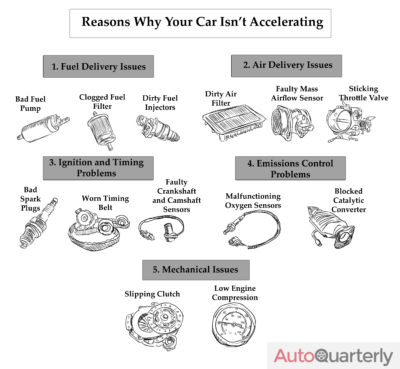You’re sitting at the traffic lights. They finally turn green, and you plant your foot on the gas, racing off into the distance like something out of a “Fast & Furious” film. Okay, perhaps not, but your car should accelerate in a reasonable time, regardless of whether it’s a Nissan GTR or a Subaru Outback.
Something is wrong if your car is struggling to move when pressing the accelerator. Sluggish acceleration can be caused by many things, making it a complicated issue to diagnose and fix. It may be caused by something simple, or there could be several complex issues needing your attention.
This article aims to make your life easier by exploring the common causes of sluggish acceleration. We’ll identify the main areas to investigate, along with the common components that can cause issues. By the end of this article, you will have a better idea about what’s causing your car’s lackluster acceleration.
Under the Hood: How Acceleration Works
Before we jump right in, we should first look under the hood at how acceleration works. This will help in understanding why your car is suffering from slow acceleration.
For an engine to run, it needs three key things: fuel, air, and ignition. Without just one of these things, your car’s engine won’t work, and your car won’t accelerate.
When you hit the accelerator, several things happen. First, the accelerator pedal sensor relays information to the engine control unit (ECU) about the position of the accelerator pedal. The ECU then calculates how much air and fuel is needed based on how far you’ve pressed the pedal.
The ECU tells the fuel injectors to provide a certain amount of fuel, and it also tells the throttle valve to open to allow air into the engine. The ECU also receives lots of additional information from various sensors to achieve the correct air-fuel ratio needed for combustion.
Finally, the ECU tells the spark plugs to fire to ignite the air-fuel mixture. This explosion makes the piston move, which is what drives the engine. If something is not quite right with any of these steps, it can cause the engine to run rough and may result in slow acceleration.
Is It Dangerous to Drive a Car That Doesn’t Accelerate?
Should you still drive your car if it isn’t accelerating? Is it dangerous?
If your car can’t get up to speed quickly or never gets up to speed, that can be very dangerous, especially if you’re driving on a fast-moving highway. In that case, you shouldn’t be driving your car at all as you’re a danger to yourself and others.
However, if your car can get up to speed, but it just takes a bit longer, you probably can drive without any major issues. With that said, driving a car with engine issues isn’t the smartest move; the issues can worsen if they’re not fixed. That means higher repair costs down the line.
At AutoQuarterly, we’d always recommend taking your vehicle to a reputable garage for diagnostics and repairs. It’s not worth risking your safety and further damage to your engine.
Slow Acceleration: Potential Quick Fixes to try First
Before spending a lot of time and money on the problem, it might be worth trying out these quick fixes as they can solve slow acceleration in certain situations.
Check the Accelerator Pedal
Get down into the driver-side footwell and check the accelerator pedal. Is there anything wedged behind the pedal? It’s quite common for things to fall and get stuck behind the pedal, limiting its range of motion. This can also happen if you have floor mats. Make sure nothing is preventing the pedal from being fully depressed.
Release the Emergency Brake
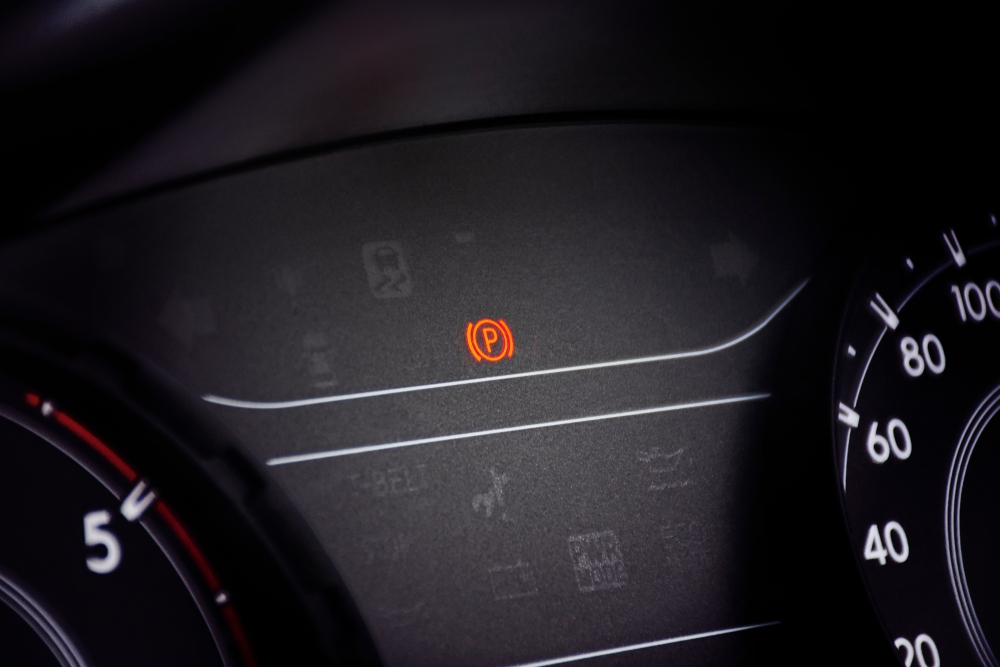
Double-check that the emergency brake is not engaged. Most of the time, there will be a dashboard warning light indicating that the emergency brake is on; however, the sensor that does this can become faulty. Your car will suffer from slow acceleration and excessive wear to the emergency brake if it’s engaged while driving.
Fill the Tank With Fuel
Take a trip to the gas station and fill your fuel tank if it’s empty. Some cars struggle to drive if the fuel level is low. This is often caused by a weak fuel pump struggling to pump fuel from the bottom of the fuel tank. If this solves your problem, it may be worth replacing the fuel pump before it fails entirely.
While these fixes aren’t guaranteed to solve your acceleration issue, they are quick and easy to carry out, so it’s worth trying them first!
Reasons Why Your Car Isn’t Accelerating
There are five key areas to look at when it comes to acceleration issues: fuel delivery, air delivery, ignition and timing, emissions control, and mechanical parts.
We’ll be looking at the most common causes of sluggish acceleration for each of these categories.
#1. Fuel Delivery Issues
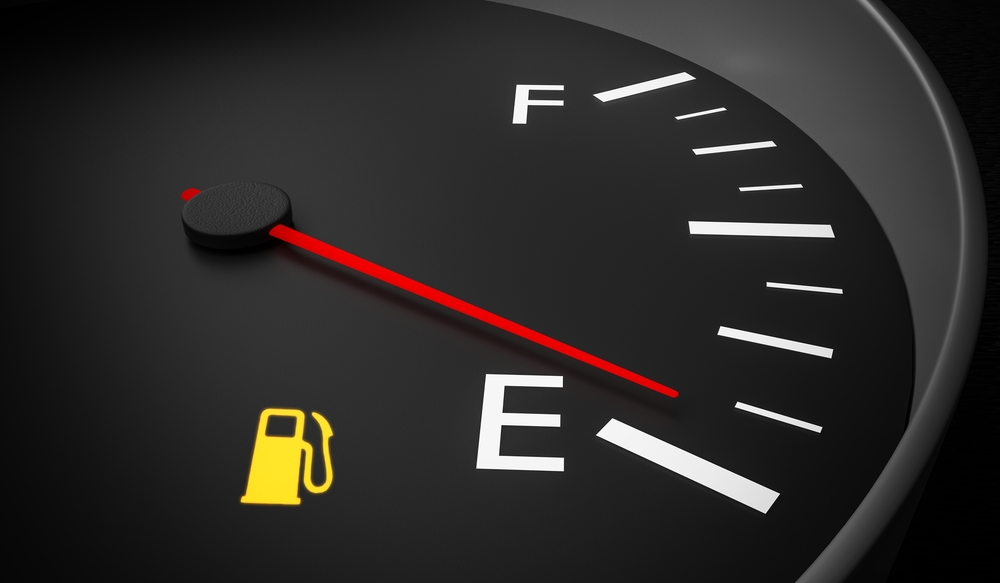
Your car’s engine won’t run or accelerate if there’s an issue with the fuel delivery. The three most common causes of fuel delivery issues include the following:
Bad Fuel Pump
The fuel pump is where the fuel’s journey into the engine begins. The fuel pump sits in the fuel tank and draws up fuel that gets delivered to the engine. The pump can become weak over time and eventually fail, resulting in little to no fuel reaching the engine.
You can tell if the fuel pump is failing by listening out for any odd noises coming from the rear of the car. This is more prominent when starting the car.
Fuel pump replacement costs anywhere from $200 to $1,000 for parts and labor. The exact amount will depend on how much the parts cost for your make of vehicle and how difficult the pump is to change.
Clogged Fuel Filter
The fuel filter does what it says on the tin; it filters fuel. It’s common for fuel tanks to rust and for fuel to congeal over time, which eventually makes its way to the fuel filter. The filter will stop this gunk from reaching the engine, but the filter will become clogged at some point. If it’s badly clogged, fuel will no longer reach the engine.
Fuel filters should be replaced periodically or as part of a routine service. Replacement filters cost between $50 and $200 for parts and labor, and you can expect it to last for around 30,000 miles before it needs replacing again.
Dirty Fuel Injectors
Once the fuel has been drawn up by the fuel pump and has passed through the fuel filter, it finally makes its way through the fuel injectors. The injectors spray a fine pattern of fuel into the cylinders. The cylinders have a lot of carbon build-up caused by the combustion process, and over time this can cause the injectors to become dirty or clogged.
You can try an off-the-shelf fuel system cleaner, although it may not be enough to solve the problem if the injectors are really blocked. If that’s the case, the injectors will need to be removed and professionally cleaned.
Besides being dirty, the injectors may be worn — they have internal components that can wear down over time. You can have the injectors professionally cleaned and rebuilt for a cheaper cost than replacing them with new parts. The exact cost will vary depending on how many injectors you have and whether they just need cleaning or a full rebuild.
#2. Air Delivery Issues

As with fuel, if there’s not enough air entering the cylinder, the air-fuel ratio will be incorrect, and that can cause running issues like misfires. The three main causes of air delivery issues are as follows:
Dirty Air Filter
The air filter prevents dirt and debris from entering the engine cylinder where it can cause damage. Over time the filter naturally gets dirty, and it should be replaced as part of a routine service or every 15,000 miles.
The good news is that air filters are super cheap; you can pick up a new air filter for under 25 bucks. It’s easy to install yourself, so you can avoid paying a garage to do the work for you.
Faulty Mass Airflow Sensor
The mass airflow (MAF) sensor monitors the volume of air entering the engine, which the car’s computer (ECU) sees. This data allows the ECU to inject the right amount of fuel for the air-fuel ratio to be correct.
MAF sensors can become dirty or malfunction, resulting in the ECU seeing the wrong air readings. This causes the car to run too rich or too lean, which can have a detrimental impact on acceleration.
You can pick up a bottle of MAF sensor cleaner to see if that solves the problem. If that doesn’t help and the MAF sensor is kaput, you will need to purchase and fit a replacement.
The replacement cost for parts and labor is around $300, although this may be a little more if you have a higher-end vehicle. It’s not too tricky to replace yourself, so you can save around $60 by fitting it yourself.
Sticking Throttle Valve
The throttle valve opens when you hit the accelerator to allow more air into the engine. Sometimes this valve gets stuck, meaning it doesn’t open fully due to oil residue from the recirculation valve.
It’s worth cleaning it with something like WD40 carb cleaner as that is usually enough to unstick it. The valve itself is a simple component that’s spring-loaded, and they don’t often fail, but it is possible. A new throttle body will cost anywhere from $350 to $1,500 (including labor costs) depending on the model of your vehicle.
#3. Ignition and Timing Problems
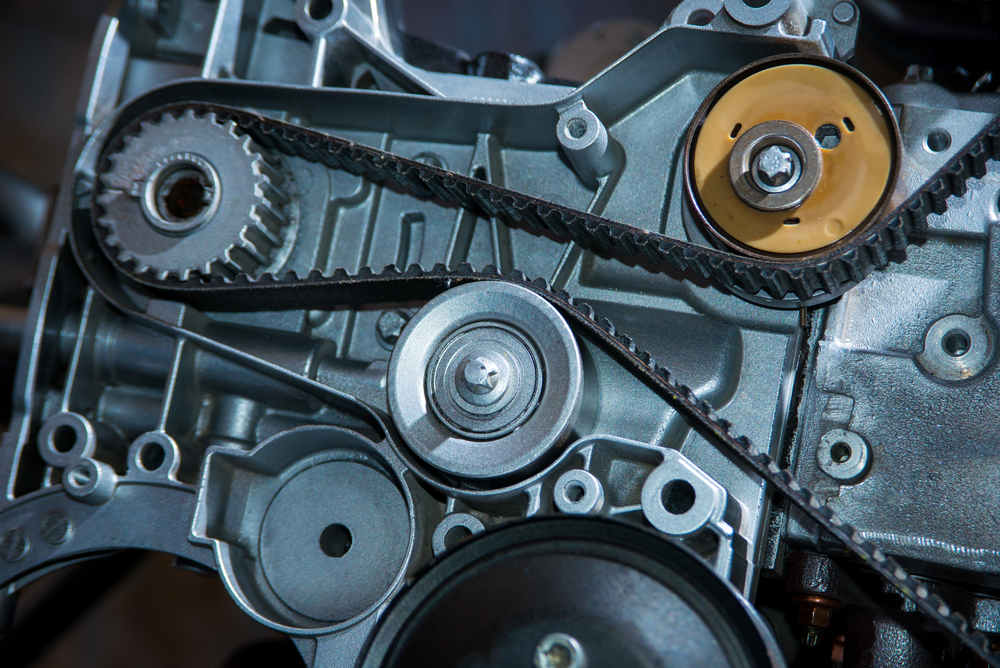
Bad ignition and timing problems can wreak havoc for your engine as an engine is supposed to work like a well-oiled machine. Any slight disturbances with the timing can cause the whole system to go out of whack and results in misfires, check engine lights, and stalling.
Bad Spark Plugs
Spark plugs ignite the air-fuel mixture, which is what allows the combustion process to happen. Without functioning spark plugs, your engine won’t run efficiently, or it may not run at all.
Spark plugs can get dirty over time, and they do wear out too. Thankfully they’re cheap at less than $10 per plug (depending on the brand and quality), but you can expect to pay an additional $50 to $150 for fitting at a garage.
You can fit spark plugs yourself if you’re mechanically competent, but we would advise going to a garage as there’s a risk of snapping the plug in the cylinder head. That is one expensive problem to sort out if it happens to you.
Worn Timing Belt
The timing belt ensures that everything is working together in sync. It’s not unheard of for a timing belt to jump, which throws off the timing of various components.
If you’re lucky, this may only result in minor issues like loss of power or slow acceleration. If you’re not so lucky, it can cause serious engine damage; for example, the pistons can hit the valves, which will cost a fortune to repair.
Timing belts do need to be changed periodically, at around 60,000 miles. We’d recommend letting a professional change the belt as there can be serious consequences if it goes wrong.
Faulty Crankshaft and Camshaft Sensors
The crankshaft and camshaft are connected via the timing belt to ensure they work together in sync. The crankshaft and camshaft sensors monitor each shaft’s position, providing the ECU with information to ensure the engine runs correctly. However, the sensors can become faulty and throw up error codes.
If that’s the case, they will need to be replaced. Each sensor costs $25 to $100 for the part and an additional $70 to $100 for labor.
#4. Emissions Control Problems

Your car has emissions control components to reduce toxic emissions and keep the car running correctly. If these parts have issues, the ECU may receive incorrect information.
Malfunctioning Oxygen Sensors
The oxygen sensors (aka lambda sensors) monitor the amount of oxygen coming from the engine’s exhaust stroke. If there’s too much or too little oxygen, the ECU knows that something isn’t quite right, so it will adjust the fuel and air delivery.
These sensors can be faulty and provide incorrect information, causing the ECU to make changes that aren’t needed, thus making the engine run badly.
Blocked Catalytic Converter
The catalytic converter reduces the output of harmful emissions from the exhaust. It can become blocked, which prevents the exhaust gasses from escaping. The build-up of exhaust gasses causes backpressure, which hinders the engine and causes it to lose power.
A brand new catalytic converter isn’t cheap; it contains precious metals like platinum, which react with the toxic fumes to make them safer. You can expect to pay $800 to $2,500 for a new cat, with an additional $70 to $200 for labor.
#5. Mechanical Issues
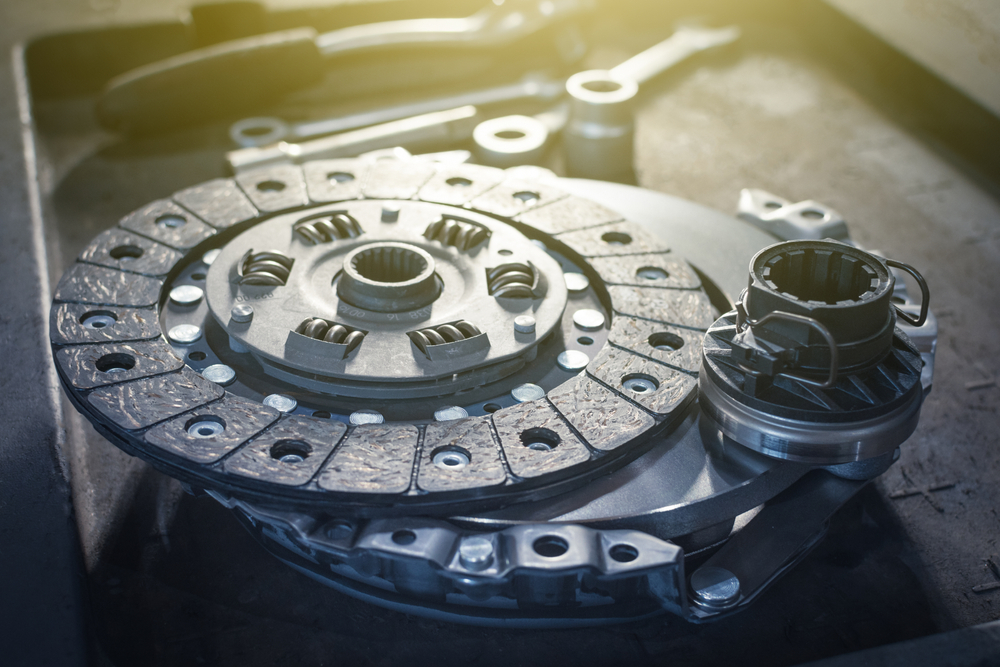
Mechanical issues, such as those listed below, can also cause problems with acceleration.
Slipping Clutch
The clutch allows power to transfer from the crankshaft to the driveshaft. If the clutch plate is worn or the clutch isn’t engaging correctly, the clutch will slip and prevent the power from transferring to the driveshaft.
It’s easy to spot a slipping clutch: when pressing the accelerator, the revs will increase sharply, but the car won’t accelerate.
A new clutch is pretty expensive, typically costing around $1,200 for parts and labor.
Low Engine Compression
Low engine compression can cause lots of issues, ranging from misfires to slow acceleration. There are several causes of low engine compression, including worn piston rings and a blown head gasket.
You will need a mechanic to diagnose the cause of low engine compression as it can be tricky to find. Depending on the cause, you may have to shell out a lot of cash to get it rectified.
Put the Pedal to the Metal
By this point, you should have a pretty good idea about how your car accelerates and what might be causing the slow or sluggish acceleration. It isn’t always easy to find the cause as there are so many potential things to look at, so a mechanic’s trained eye might be needed.
The cause may be something stupid, like the emergency brake still engaged. Or, it may be caused by something more serious, like a failed catalytic converter. Regardless, you should avoid driving your car if possible and take it to a garage as soon as possible to avoid anything else going wrong. Your car and wallet will thank you!

